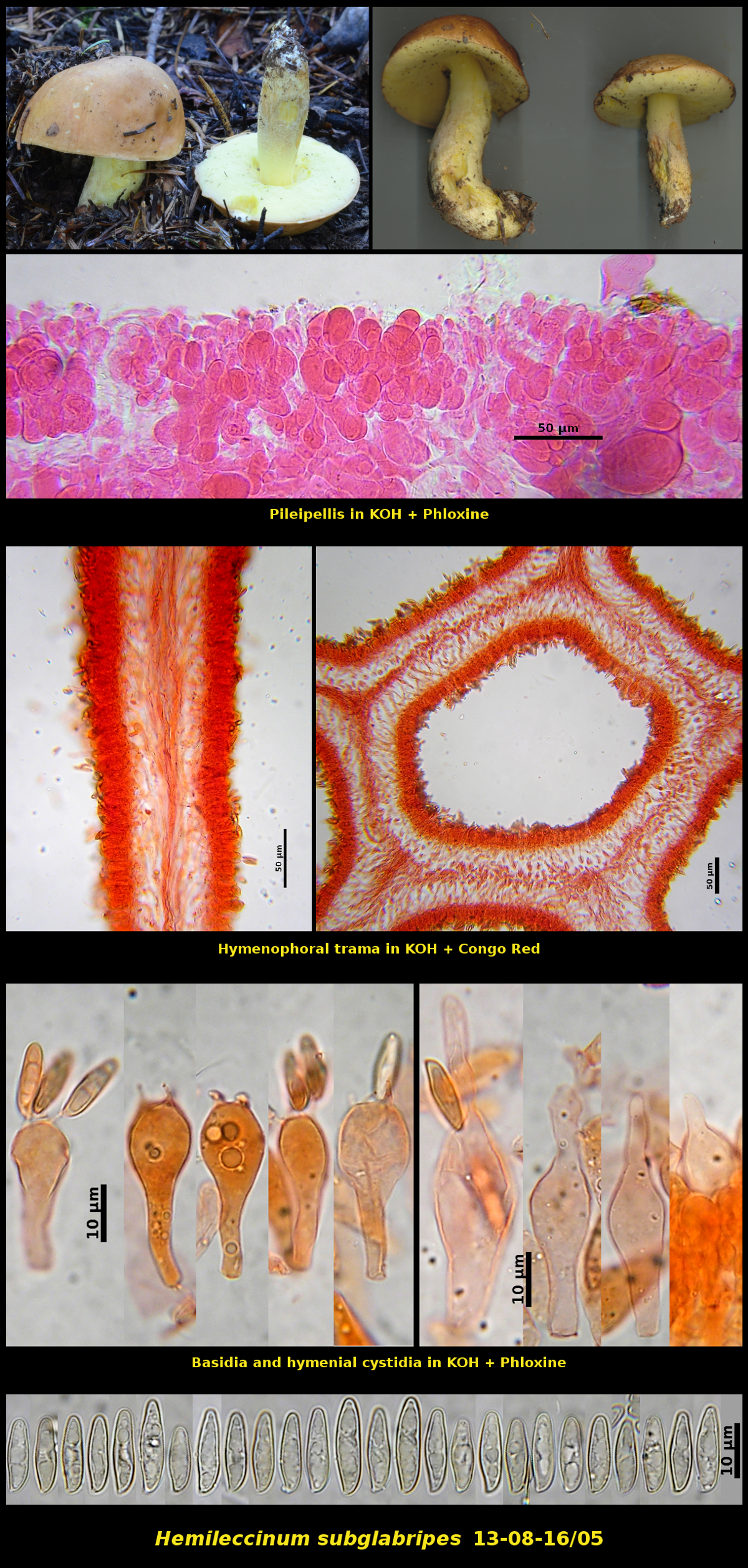Fleshy Fungi of New Brunswick >>
Hemileccinum subglabripes
Hemileccinum subglabripes (Peck) Halling

Gregarious (2) in soil in mixed forest of Abies balsamea, Betula papyrifera and Populus tremuloides, possibly also associated with Pinus banksiana, Nepisiguit Protected Natural Area, New Brunswick (13-08-16/05).
Hemileccinum subglabripes occurs throughout much of eastern North America. It is recognized by its chestnut-coloured cap, yellow scurfy stipe and yellow tubes. Most field guides have placed it in the genus Boletus as B. subglabripes, but molecular studies have shown it to belong to Hemileccinum
Basidiospores light olive in spore print, boletoid, smooth, 11.9-17.6 X 3.8-4.7 µm, D/d = 2.82-3.80 (average[28]: 14.4 X 4.2 µm, D/d = 3.43).
As Smith & Thiers pointed out in their Michigan Boletes, the pileipellis of H. subglabripes is composed of hyphae with greatly swollen end cells, resulting in a tissue resembling a hymenoderm. This tightly-packed layer is responsible for the matte surface of the cap.
The microscopic structure of the hymenophore (tubes) is also interesting. The illustration above shows at left a thin razor-blade section of the wall between the tubes. It reveals a thin but compact strand of hyphae running down throug the centre and giving rise to hyphae that grow back up diagonally to connect to the basidia. The picture at right is from a section made perpendicular to the tubes and shows this same arrangement of tissues from above.
Photo: D. Malloch (13-08-16/05).